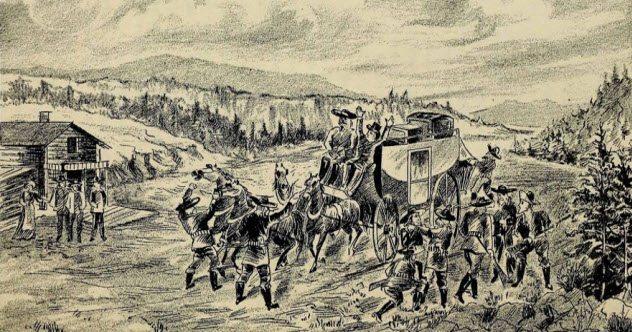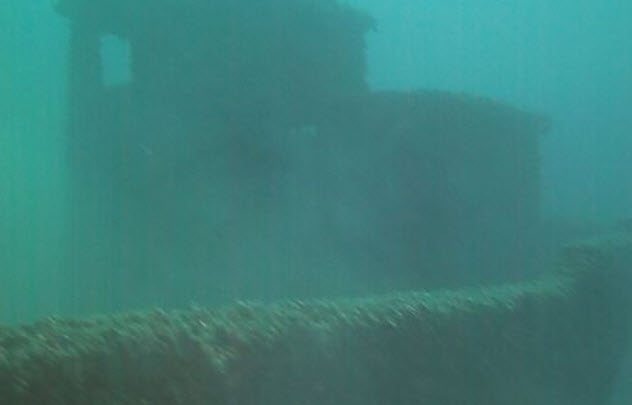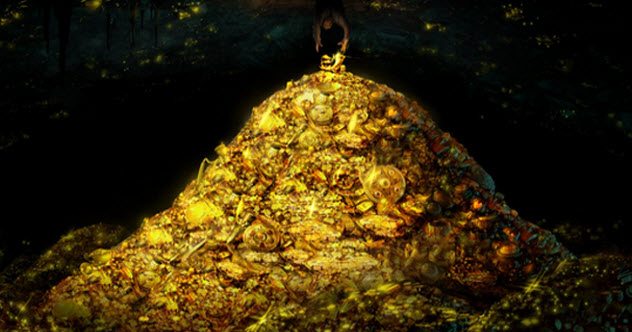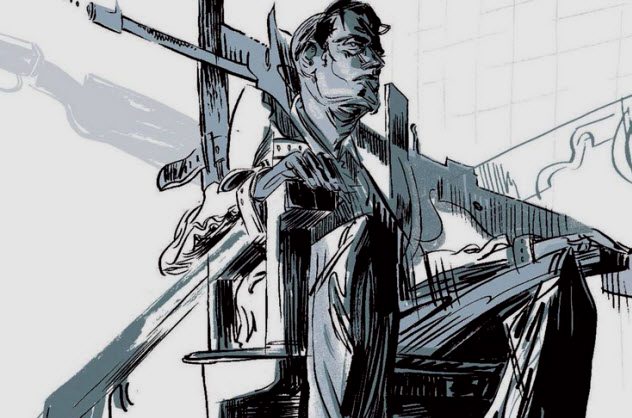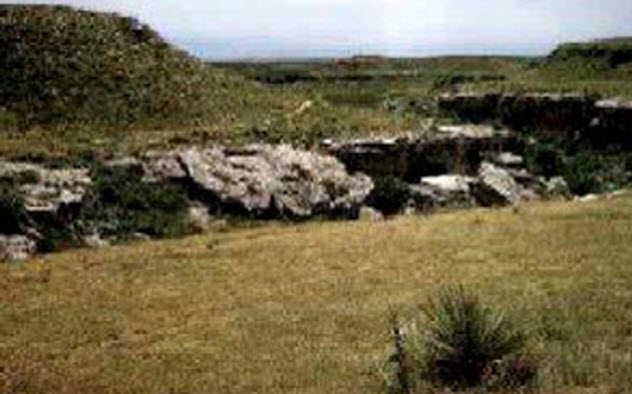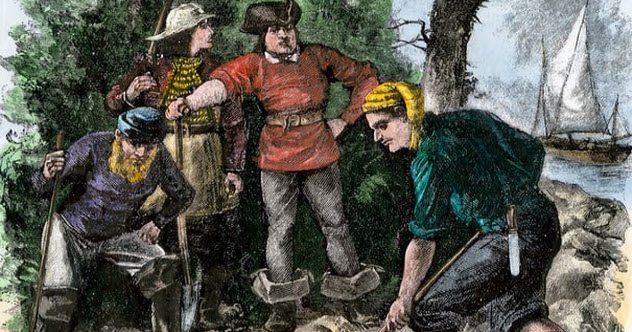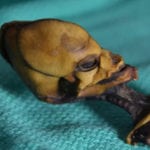You might think that the concept is antiquated and has no place in today’s modern world, but you would be wrong. There are plenty of hidden treasures still out there, waiting to reveal their secrets to intrepid explorers. Indeed, the practice is very much alive and treasure hunters are quite active and eager to risk life and limb for a chance at untold riches.
10 The Reynolds Gang Loot
Some say that the Reynolds Gang was a group of loyal soldiers still fighting for the Confederate cause. Others think that they were a band of ruthless outlaws looking to get rich. Regardless of their motivation, the group robbed multiple coaches throughout the Colorado Territory in 1864 and made off with a nice haul. And going by legend, that treasure is still waiting to be discovered somewhere around Mount Logan. Leader John Reynolds, the last surviving member of the gang, met his end in 1871. Before dying, he revealed the location of the gold to his partner at the time, Albert Brown. At the head of Geneva Gulch, you’re supposed to turn right and follow the mountain until you reach Deer Creek where you’ll find the treasure in an old prospector’s shaft. The hole is walled up, but there should be a tree with a butcher’s knife blade stuck inside it pointing toward the hidden mouth of the shaft.[1] The directions seemed straightforward enough. However, according to legend, Brown discovered that either a forest fire or a landslide had altered the terrain and destroyed the landmarks. Since then, there have been others who claim to have found clues related to the treasure. To our knowledge, none of these men recovered the treasure. So, perhaps, it’s still out there.
9 The Lake Michigan Gold
There is a fortune in gold bullion somewhere at the bottom of Lake Michigan. This comes courtesy of one George Alexander Abbott, former vice president of Hackley National Bank who died in 1921. He knew that a boxcar full of stolen Confederate gold had to be pushed off a ferry struggling to cross Lake Michigan during a violent storm in the mid-1890s. On his deathbed, Abbott told a lighthouse keeper about the treasure. That man then told another person and so on. Currently, the story is being perpetuated by two divers, Kevin Dykstra and Frederick Monroe. They think that the gold was stolen by former Confederate General Robert H.G. Minty who was also Abbott’s brother-in-law.[2] Civil War historians are not convinced, though, and have cited several historical inaccuracies in the story. Dykstra and Monroe actually made some headlines in 2014. While searching for the gold, they stumbled upon a shipwreck purported to be Le Griffon, an infamous barque that mysteriously disappeared in 1679. It was later determined to be a tugboat.
8 The Riches Of The Copper Scroll
During the mid-20th century, people uncovered almost 1,000 ancient Jewish texts known collectively as the Dead Sea Scrolls. Of particular interest for treasure hunters was scroll 3Q15, popularly known as the Copper Scroll, as it was the only one written on thin metal sheets instead of papyrus or parchment. It also wasn’t a religious text but rather an inventory of 64 locations where caches of gold, silver, and gems were hidden. The total value of the treasure has been estimated in the billions. As far as we know, no stockpile has ever been found, at least not in modern times. Some historians opine that the Romans could have learned of the treasure and dug it up during the Jewish-Roman Wars. It would have also been possible, even expected, for the Jews to retrieve all the remaining loot to help rebuild the city afterward. One fringe theory, courtesy of Robert Eisenman, said that the Knights Templar found the treasure during the First Crusade. Others believe that it never existed in the first place. The wording of the text doesn’t make things easier. It is clearly intended for contemporaries with intimate knowledge of the area. One cache, for example, is hidden “in the gutter which is in the bottom of the tank.” Another is “in the funeral shrine, in the third row of stones.”[3] Chances of such directions being useful thousands of years later are slim to none.
7 The Gold Of The Llanganates
In 1532, Spanish conquistador Francisco Pizarro led an ambush against the Inca Empire at Cajamarca and captured their ruler, Atahualpa. The building where the emperor was allegedly imprisoned is still there today. It is known as the Ransom Room because Atahualpa offered to fill it with gold and the next two with silver in exchange for his freedom. Initially, Pizarro agreed. So the Incas began gathering massive amounts of treasure to ransom their leader. In the meantime, the conquistador decided that it was too dangerous to let Atahualpa live, so he had him executed. When word of his death reached the Incas, they allegedly hid the treasure in a secret cave in the Llanganates mountain range in modern-day Ecuador. Several people claimed to have found the treasure since then. Fifty years after Atahualpa’s death, a Spaniard named Valverde is said to have become rich overnight when his Incan bride told him of the location. He wrote “Derrotero de Valverde,” directions to the treasure.[4] An English botanist named Richard Spruce is said to have discovered the cave using Valverde’s guide in the mid-19th century. So did a treasure hunter named Barth Blake who mysteriously disappeared soon after. Since then, many have tried and failed to find the location again. It is possible that frequent earthquakes could have caused a cave-in, hiding the Incan gold forever.
6 The Treasure Of The Esperanza
In the middle of the Pacific Ocean, there is a 12-square-kilometer (4.6 mi2) atoll called Palmyra with a population of 4–20 American scientists and staff. It could also be the hiding place of pirate treasure. In 1816, the Spanish ship Esperanza headed for the Antilles with a cargo of gold, silver, and jewels looted from Peru. On the way, it ran into a storm which broke its mast, thus turning the ship into an easy target for pirates. It was attacked, plundered, and sunk. On its way to Macao, the pirate ship also encountered a storm, lost its course, and wrecked into the coral reef surrounding Palmyra Atoll. The pirates divvied up the treasure, burying most of it on the island. The majority of the crew built an impromptu craft and tried to reach the mainland. They were never heard from again. Ten men stayed behind. But with supplies dwindling, they also decided to try to sail away. Six left on a small escape boat. Of them, four went overboard in a storm. The other two were rescued by an American whaler, but one died en route to San Francisco. The sole survivor was James Hines.[5] He made it to the mainland, wrote letters detailing his ordeal, and died after a month. A hundred years later, the man who possessed the letters, a Honolulu harbormaster named William Foster, gave them to the Honolulu Star-Bulletin, which published the account. The fate of the treasure and the four men left on the island remains unknown.
5 The Pierpont Farm Plunder
Leipsic, Ohio, doesn’t have many claims to fame, but it was once the headquarters of one of the most dangerous gangs in the United States. In the village was a farm owned by the Pierpont family. Their son, Harry Pierpont, was a bank robber and mentor to the notorious John Dillinger. The whole gang routinely used the farm as a hideout between bank robberies. People believe that the outlaws also buried a lot of money from their scores somewhere on the farm or perhaps in the woods right next to it. Even the FBI believed. After Pierpont was executed, the gang was mostly broken up, his parents moved away, and the farm became abandoned. Locals remember detectives coming by to search for the money or to wait in hiding, hoping that some of the remaining gangsters would return for their loot.[6] When the FBI lost interest, treasure hunters came, hoping to strike it rich. As far as we know, nobody ever discovered the money.
4 The Jarbidge Stage Robbery
On December 5, 1916, Ben Kuhl and his two associates robbed a stagecoach outside Jarbidge, Nevada, and killed the driver, Fred Searcy. For Wild West and crime enthusiasts, this is notable for two reasons: It was the last stagecoach robbery in US history and the first time in which a criminal was convicted using palm prints as evidence. The story appeals to treasure hunters for a different reason: $4,000 in stolen gold coins and bills was never recovered. The robbers’ options for locations to stash their loot were limited. Curiously, a search party found the stolen mail pouch buried near the bank of the Jarbidge River, but it was missing the $4,000. Could it be that one of the robbers betrayed the other two? Maybe, after hiding their loot together, he returned alone, took the money, and reburied the bag. One of Kuhl’s associates, William McGraw, turned on the other two and only served 10 months in jail. The other accomplice, Ed Beck, got out after six years.[7] If either one knew where the money was, chances are they dug it up. Ben Kuhl, however, served 28 years, and it is believed that he died a few months after his release. If he was the only one who knew of the treasure’s location, then the money could still be buried somewhere in Jarbidge Canyon.
3 The Stechovice Treasure
Nazi gold is another alluring prospect for treasure hunters. During World War II, Nazis plundered many riches which have not been recovered yet. For example, General Emil Klein amassed a fortune in gold, diamonds, and jewelry estimated at $62 billion. Allegedly, he hid his war booty in tunnels near the town of Stechovice in the Czech Republic. During the 1970s and ’80s, the Ministries of Interior and Defense supervised unsuccessful efforts to uncover the treasure. Afterward, a company called Omnipol also tried its luck. For the last three decades, a treasure hunter named Josef Muzik has been the driving force behind the hunt for the Stechovice loot. Eventually, Muzik partnered with fortune seeker Helmut Gansel, a former Czech intelligence officer.[8] He claims to have exclusive documents pertaining to the treasure which were obtained from Klein himself. However, the duo is short on funds at the moment and is trying to raise capital for future digs.
2 The Fleagle Gang Fortune
Brothers Jake and Ralph Fleagle led a ruthless gang during the 1920s. They originated from Kansas but spread their crime spree over neighboring Nebraska, Colorado, Missouri, and all the way to California. They preferred to target gambling houses and high-stakes games. Their biggest score was also their downfall. In 1928, the Fleagle Gang robbed the First National Bank in Lamar, Colorado, which ended in a bloody shoot-out. They got away with over $200,000 but also left a lot of bodies in their wake. Ralph Fleagle and the other gang members were captured and hanged in July 1930. Jake Fleagle was killed in a shoot-out later that same year. This should have been the end of the Fleagle Gang, but their legacy lived on thanks to stories of buried treasure. Ralph Fleagle was said to be a miser who saved all his loot. Not trusting banks, he chose to bury it in secret stockpiles all across the states patronized by the gang. There are stories of people finding some caches.[9] Some believe that the Fleagle extended family dug it all up. Others think that treasure is still out there, waiting to be found.
1 Captain Kidd’s Treasure
William Kidd had a modest career as a pirate, yet he remains one of the most infamous buccaneers of his era. This reputation is built almost entirely on legends of his buried treasure. They served as inspiration for songs, stories, paintings, and ballads which turned Captain Kidd’s plunder into one of the true holy grails for treasure hunters. There is historical evidence that Kidd buried at least one treasure chest on Gardiner’s Island in New York. It was intended for Richard Coote, Earl of Bellomont, the province’s governor and one of Kidd’s sponsors. Despite numerous attempts to find the pirate’s long-lost treasure, it seemed as if its location would remain a mystery forever. Then, in May 2015, underwater explorer Barry Clifford made the shocking announcement that he had found Kidd’s ship, the Adventure Galley, right off the coast of Madagascar when the captain sank it after it became unseaworthy. Not only that, but he also found part of the mythical treasure—a giant silver bar weighing 50 kilograms (110 lbs). The discovery of Captain Kidd’s loot made headlines all over the world. What wasn’t as publicized was the fact that a separate investigation by UNESCO a few months later determined that the “silver” ingot was actually 95 percent lead.[10] It was a ballast piece broken off during port constructions in Ile Sainte-Marie. They found no signs of an actual shipwreck. While this surely disappointed history enthusiasts, it gave treasure hunters hope. Captain Kidd’s booty could still be out there.
